#mesopotamian paganism
Explore tagged Tumblr posts
Text
reposted from my tik tok! happy (late) Venus day 💕
#aphrodite#aphrodite devotee#hellenic polytheism#hellenic polytheistic#ishtar#hellenic community#astarte#ishtar worship#mesopotamian paganism
16 notes
·
View notes
Text
Pagan syncretism is the best. I love being able to worship whomever, whenever. I love being able to study occultism from around the world and put together a practice that is so unique and special to me. I love being able to worship gods from ancient societies like Greece. I love the even more ancient gods from Egypt. And we can go back further and revive the gods from Sumer! I love honoring spirits of the sun, and moon, of death, and love. I love being playful with the faeries, soaring with dragons, and meditating with bodhisattvas. If it is open to me, I am willing to learn and boy has it enriched my life tenfold! I don’t ever want to stop!
#pagan#paganism#hellenic deities#hellenic devotion#polytheism#omnism#animism#syncretism#dragons#faeries#faery witch#faerie#fae folk#bodhisattva#meditation#mesopotamian deities#kemetic#egyptian deities#greek gods#shinto#buddah
348 notes
·
View notes
Text
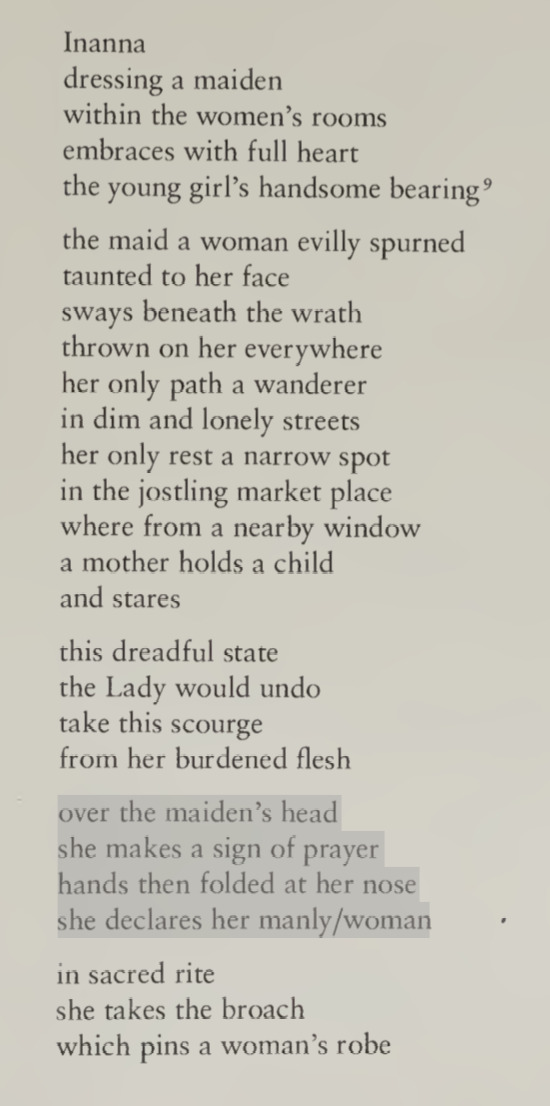
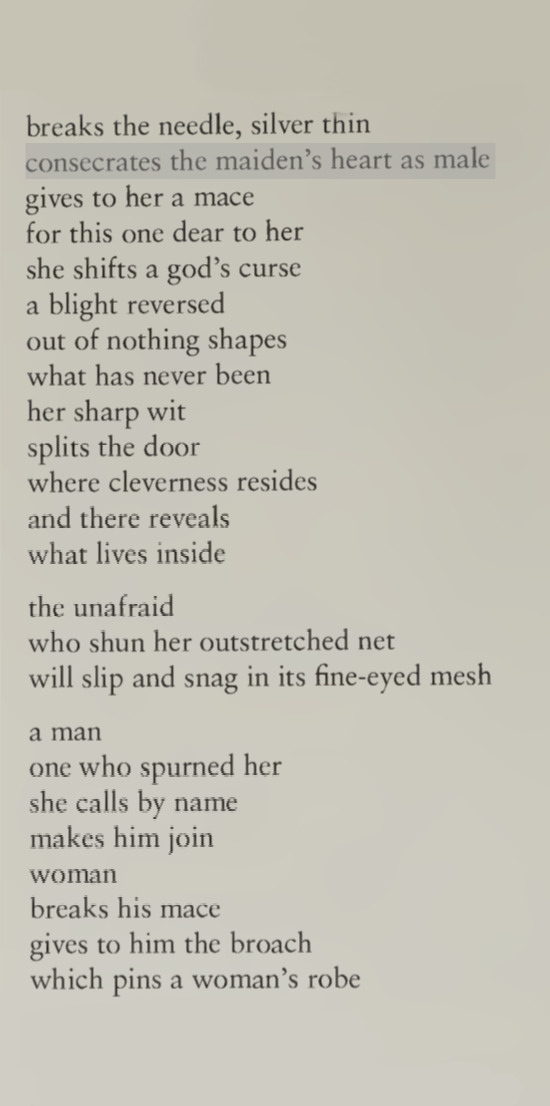
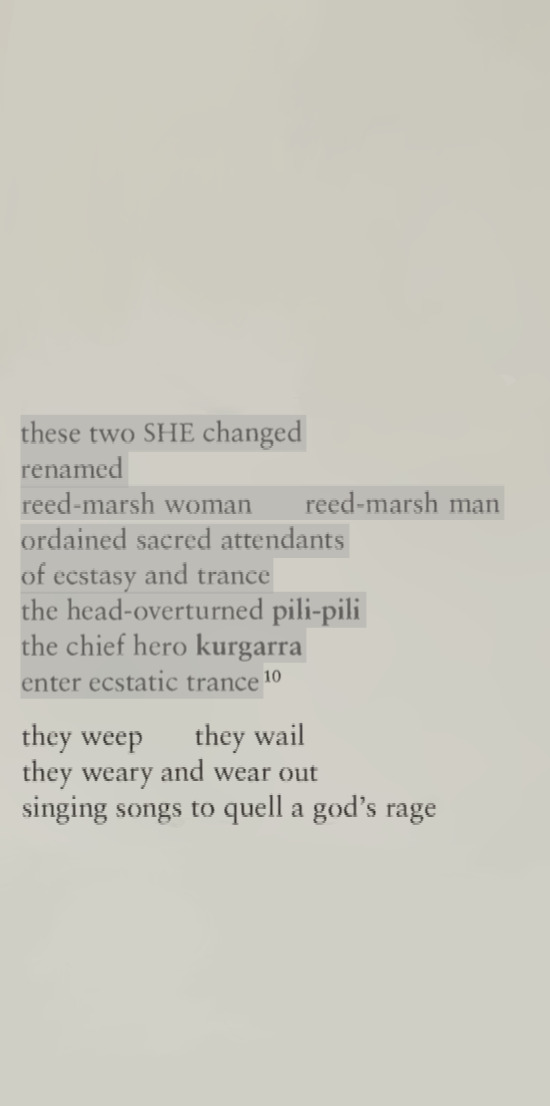
from Lady of the Largest Heart, a poem by High Priestess Enheduanna & translated by Betty De Shong Meador.
#m.#inanna#ishtar#enheduanna#aššurism#mesopotamian polytheism#trans theology#trans paganism#transmasc#transfem
801 notes
·
View notes
Text
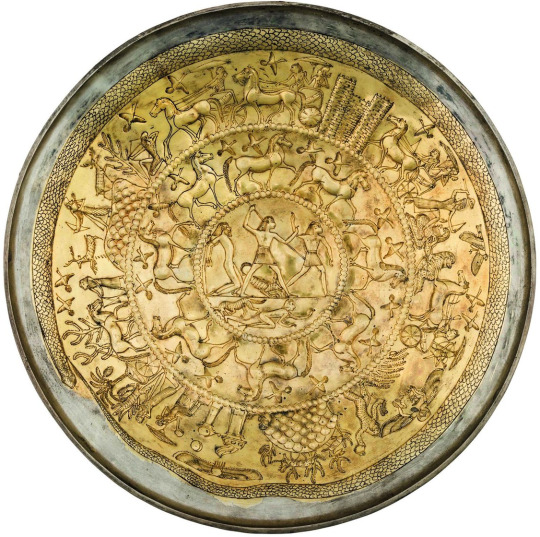
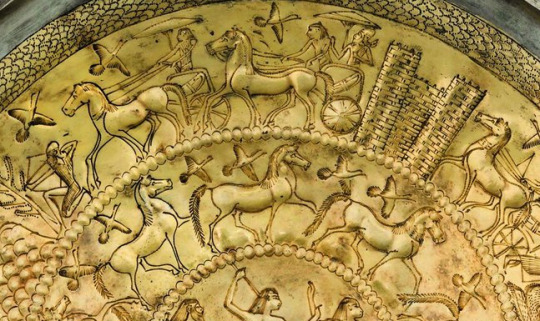
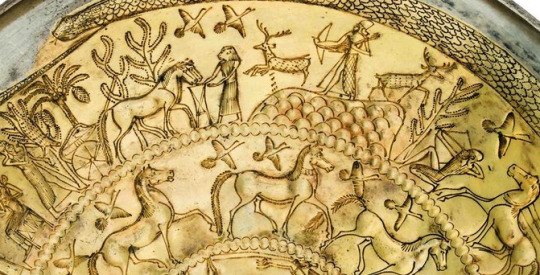
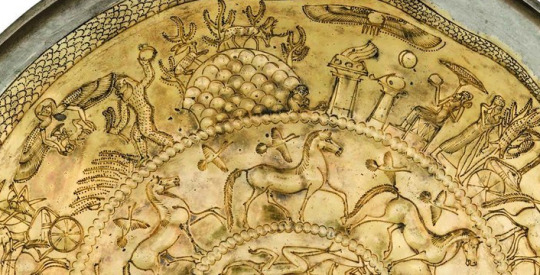
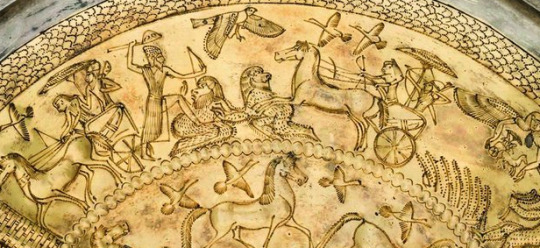
Phoenician Bowl with encircling Serpent Bernardini Tomb (Palestrina, Italy) c. 700 BCE The National Etruscan Museum of Villa Giulia Rome, Italy
#cyprus#rome#italy#egypt#egyptian gods#canaan#canaanite gods#phoenicia#phoenician gods#aram#aramean gods#syria#syrian gods#levantine gods#mesopotamia#mesopotamian gods#pagan gods#polytheism#archeology#magic#witchcraft#witchblr#paganblr#occult#uroboros#ouroboros#warfare#hunting#soldiers#birds
1K notes
·
View notes
Text
💕Goddesses of love💕

Aphrodite: Greek Goddess of love, beauty, sex and lust.
Aphrodite, the goddess of love and beauty, emerged from the sea in a scallop shell and sailed to Cyprus. She possessed a magical girdle and had many lovers, including Ares and Adonis. Ares killed Adonis out of jealousy, leading to the creation of anemones. Adonis became a god split between the Underworld and Earth due to Aphrodite's love. She travels with the Three Graces and bestows joy, brilliance, and abundance upon mortals. She aids in romantic love and is associated with myrtles, roses, and anemones.
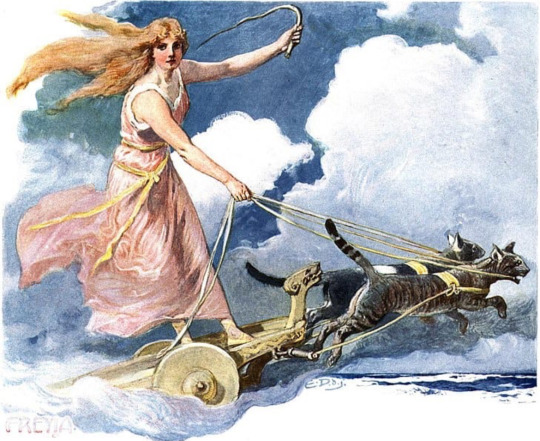
Freya: Norse Goddess of love, war, fertility and magic.
Freya, the Norse goddess of love and ruler of war and death. She mediated conflict between warring groups of Norse gods and established peace in Asgard. She is known for her beauty, sorcery, and sexuality, as well as for riding a cat-drawn golden chariot. Freya wears a falcon-feathered cloak that allows her to move quickly between heaven and Earth and has an enormous palace in Asgard where she celebrates with the souls she chooses from the battlefield. In one myth, she obtains the famous amber necklace, Brisingamen, from four dwarves by sleeping with them, beauty for beauty.

Oshun: African Goddess of love, beauty, prosperity & femininity.
Oshun is a goddess of love in the Yoruba religion. She is one of the 7 orishas and the source of power for all the other orishas. Oshun has the ability to make all things flow in the universe through her love and strength. She played a significant role in encouraging Ogun, father of civilization, to continue creating. Oshun is the only goddess who can carry messages between the mortal world and the Supreme Creator in heaven. In Nigeria, there is an annual ceremony called Ibo-Osun where women dance for Oshun during a feast of yams, with the best dancer winning Oshun's favor and becoming the village adviser on healing and fertility.
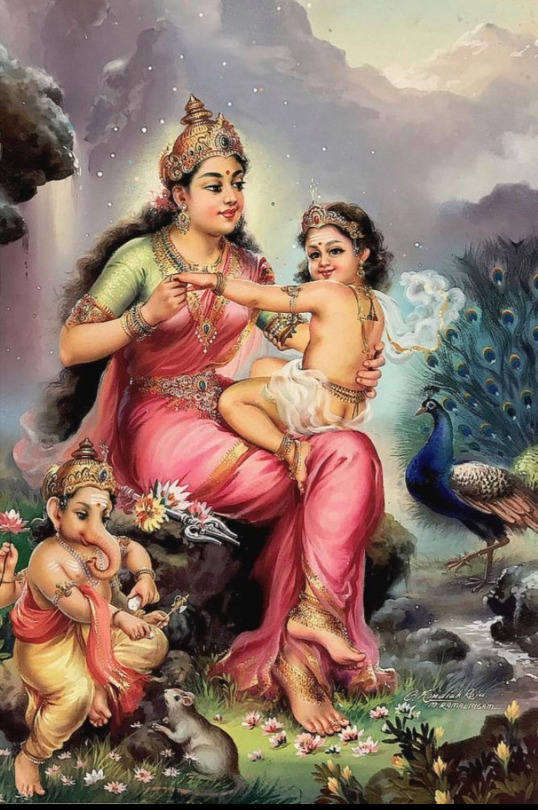
Parvati: Hindu Goddess of love, fertility, harmony and motherhood.
Parvati is a golden Hindu goddess known for love and devotion, forming a holy trinity with Saraswati and Lakshmi. She was born in the Himalayan mountains and embodies nurturing feminine energy. Parvati won over her husband, Shiva, through patience and determination in asceticism. Parvati is the creator of her son Ganesha, the elephant-headed god of wisdom. She is also worshiped for her strength and ferocity. In one legend, she transformed into the fearsome goddess Kali-ma to overcome & destroy demons who threaten the earth, showing her protective nature.

Guan yin: Buddhist Goddess of compassion, love, peace and kindness.
Guan Yin, originally a mortal princess named Miao Shan, was known for her compassion and kindness. Despite her father's cruelty, she devoted herself to helping others and performing miracles. After her death, she chose to remain in human form as a bodhisattva to help suffering beings, eventually becoming a goddess. By simply invoking her name, people can receive protection from harm. Guan Yin is often depicted in a white gown on a lotus throne and is revered by her followers as a symbol of love, compassion & purity. Her devotees often follow her vegetarian diet on her sacred days. Guan yin is not only the goddess of compassion, but the literal personification of it.
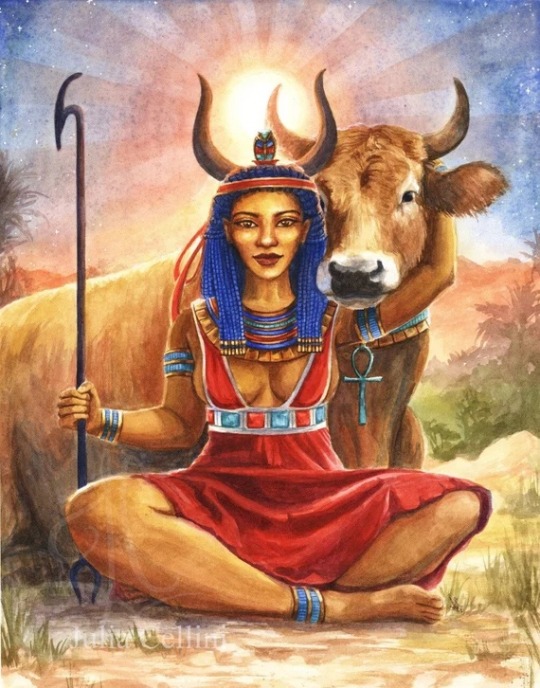
Hathor: Egyptian Goddess of fertility, love, womanhood and the sky.
Hathor, ancient Egyptian goddess of love and joy, has been revered for over 3,000 years. Known as the Gentle Cow of Heaven, she provided milk to the Sun God Ra, making him and other pharaohs divine. Hathor created the Milky Way and is often depicted wearing a crown with cow horns. She is worshipped through joyful ceremonies of music and dance and is the most beloved goddess in ancient Egyptian belief. Hathor is also the goddess of the Underworld, protector of females, and champion of romantic bonds. She can appear in different forms and her symbols are the sistrum and hand mirror.

Laka: Hawaiian Goddess of love, wilderness, the hula & music.
Laka is a Polynesian goddess of love and wilderness who taught humans the art of the hula dance. She is married to the fertility god Lono, and rain is considered a sacred time for them. Dancers in training build altars to Laka with her favorite flowers and plants, and offerings are taken down to the ocean after performances to thank her for her blessing. She is a Goddess who rules over all vegetation. Plants sacred to her are: maile, Lama, hala pepe, `ie`ie, ki, `ôhia lehua, `ôhelo, and palai.
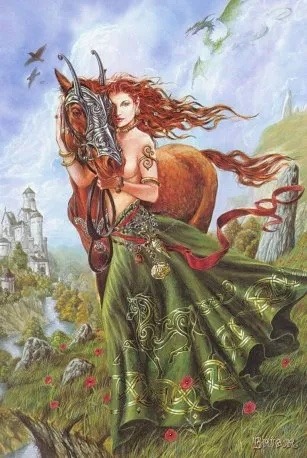
Aine: Irish Goddess of the summer, love, wealth and light.
Áine is a powerful and loving fairy queen in Irish legend, associated with agriculture, animals, and light. She is celebrated at the Midsummer Festival in Limerick, where people run up her hill to seek her blessing. She is also a survivor of sexual abuse in legends, where she shows strength and guides women to empowerment. Áine is depicted with red hair, a headband of stars, and surrounded by her animals. She can transform into a red mare who is unbeatable in speed.
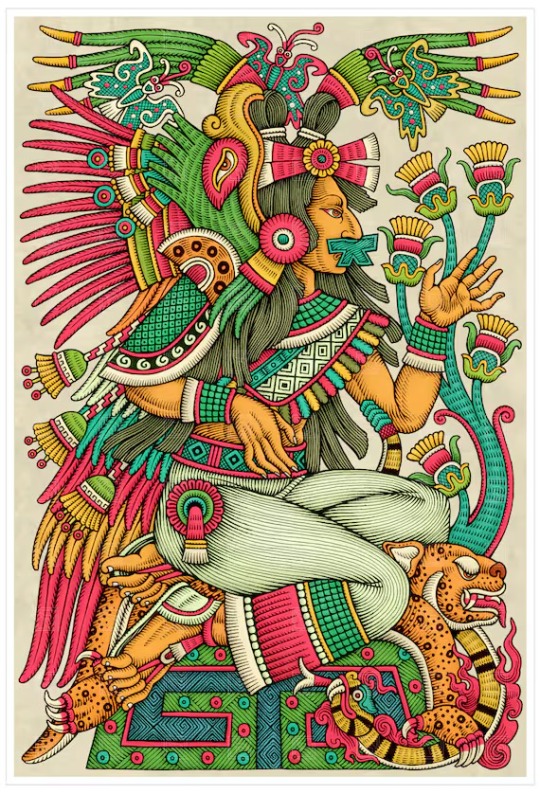
Xochiquetzal: Aztec Goddess of fertility, beauty, flowers and love.
Xochiquetzal was a powerful and complex Aztec goddess known for her beauty and seductive nature. She was worshipped as a patroness of lovers and prostitutes, encouraging love-making for pleasure rather than reproduction. Despite her associations with sexual relationships, she also had the ability to absolve humans of sins unrelated to sex. She was married to the water god, Tlaloc, and was considered a consort to the creator deity, Tezcatlipoca. Xochiquetzal was widely worshipped and honored through great rituals that included acts of sacrifice and confessions.
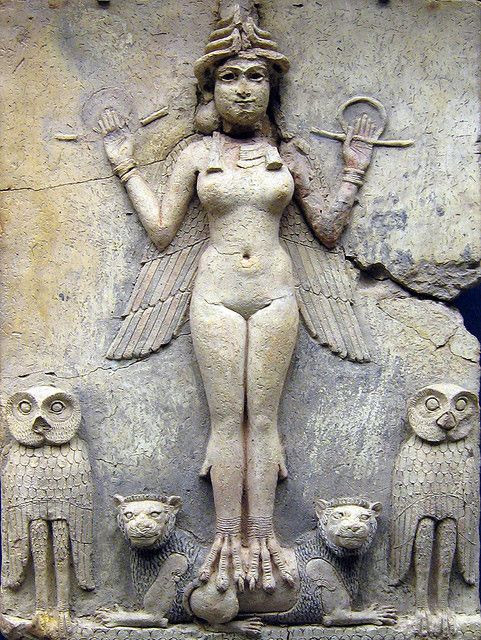
Ishtar: Mesopotamian Goddess of love, war, fertility and power.
One of the oldest goddesses in the world, Ishtar, the goddess of war and sexual love, was the queen of heaven. Ishtar is considered a member of the special class of Mesopotamian gods called the Anunnaki. Ishtar is often called Inanna, she is also an astral deity, linked to the planet Venus, and was worshipped widely in the ancient Middle East. She was known as the Queen of the Universe and had powers attributed to various other gods. Ishtar was the very first goddess of love, Mesopotamians described her in her many legends and poems as young and strikingly beautiful, with piercing, penetrating eyes.
#Religion#hindu mythology#hinduism#chinese mythology#irish mythology#greek deities#greek goddesses#greek mythology#norse paganism#norse mythology#greek paganism#buddhism#paganism#deities#goddesses#Parvati#ishtar#mesopotamian#aztec mythology#Xochiquetzal#aine#Laka#hawaiian mythology#Polynesian#egyptian mythology#hathor#Oshun#Yoruba#african mythology#lotus-list
148 notes
·
View notes
Text
📖 Myth & Sacred Scripture 📖
In Hellenic Polytheism and Mesopotamian Polytheism (and others but I don't want to speak for them) there is no sacred scripture where the words of a God are given to a myth writer and that writing is then declared holy by some form of religious authority.
The idea that myths are the literal actions of the Gods come from a concept of sacred scripture. Sacred meaning the words have holy implications or they have a fundamentally important connection to the divine. This understanding of religious writings is demonstrated in:
Protestant Christianity where the Bible is divinely inspired (usually derived from 1 Timothy 3:16 & 2 Peter 1:12). Additionally, in Trinitarian Christianity Jesus is God making his words in the Gospels the literal words of God.
Islam where the Quran are the words of God given to Mohammad via the angel Gabriel over the course of his life.
Judaism where traditionally the written Torah are the words of God given to Moses at Mt Sinai.
**There are more examples but I'm not going to try and talk about something I did not study.
This pervasive idea of scripture being the words of God embeds itself into a general view of what religion supposedly is because:
Christianity is the largest religion in the world.
Christianity is the dominant religion in English speaking countries, so when we have these discussions in English it tends to have that cultural Christian viewpoint.
Islam is the second largest religion in the world.
Islam considers the Jewish and Christian scriptures to also be given from God, but they have been corrupted in one way or another. This combination can put a mistaken emphasis on sacred scripture being a fundamental aspect of religion.
Even though Judaism is a very small religion the the written Torah is considered part of the Christian Old Testament (first five books). Christians interpret the scripture completely differently but the idea of Moses receiving the Word of God at Mt Sinai continues into Christianity from Judaism.
In many "dead religions" the closest you can come to the "words of the gods" might be the writings of ancient oracles or those who communed directly with spirits & gods. However, in Greece and Mesopotamia there was no centralized religion or continuous tradition to overview and canonize them into sacred scripture. Additionally, those are not usually what people are talking about when they refer to myth.
Myth is extremely important, but mythic literalism is a misstep people make, often due to our preconceived notions of sacred scriptures and their connection to the divine.
-dyslexic not audio proof read-
-I hope this makes sense-
#in my educated opinion?#paganism#hellenic polytheism#polytheism#helpol#myth#sacred scripture#levpag#pagan#polytheist#mesopotamian polytheism#i was writing this in another post#and it was getting so long i thought it might just be better to make it its own#i really hope this makes sense#im very tired#and my brain doesn't like functioning anymore#i genuinely do not know if my wording makes sense any more#even when i re read it sometimes it sounds write and other times i feel like im reading gibberish#gods i need that neurology appointment#this wasn't editing a repost so thats why i worry#ofthetheoi#landof2rivers#steppingontoes
104 notes
·
View notes
Photo
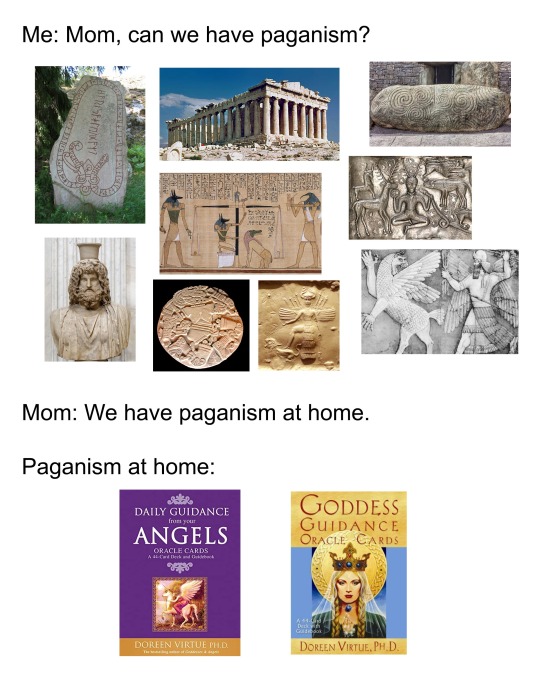
#pagan memes#paganism#neopaganism#memes#hellenic paganism#hellenic polytheism#helpol#norse paganism#asatru#egyptian paganism#kemeticism#mesopotamian mythology#sumerian#celtic paganism#doreen virtue
1K notes
·
View notes
Text
Here are some userboxes for my fellow pagans! Free to use <3






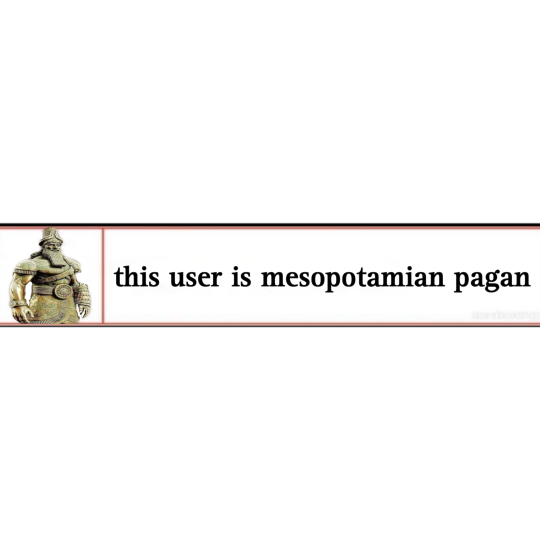
#paganism#pagan#hellenic pagan#hellenic polytheism#slavic paganism#norse paganism#celtic#celtic paganism#roman paganism#roman polytheism#arab paganism#arabian paganism#mesopotamia#mesopotamian pagan
120 notes
·
View notes
Text
The Lion of Mari, from Syria (Mesopotamia) c.1782-1759 BCE: this is one of two lion statues that once guarded the entrance to a temple in ancient Mari; the lions were partially crushed when Hammurabi laid waste to the city in 1759 BCE
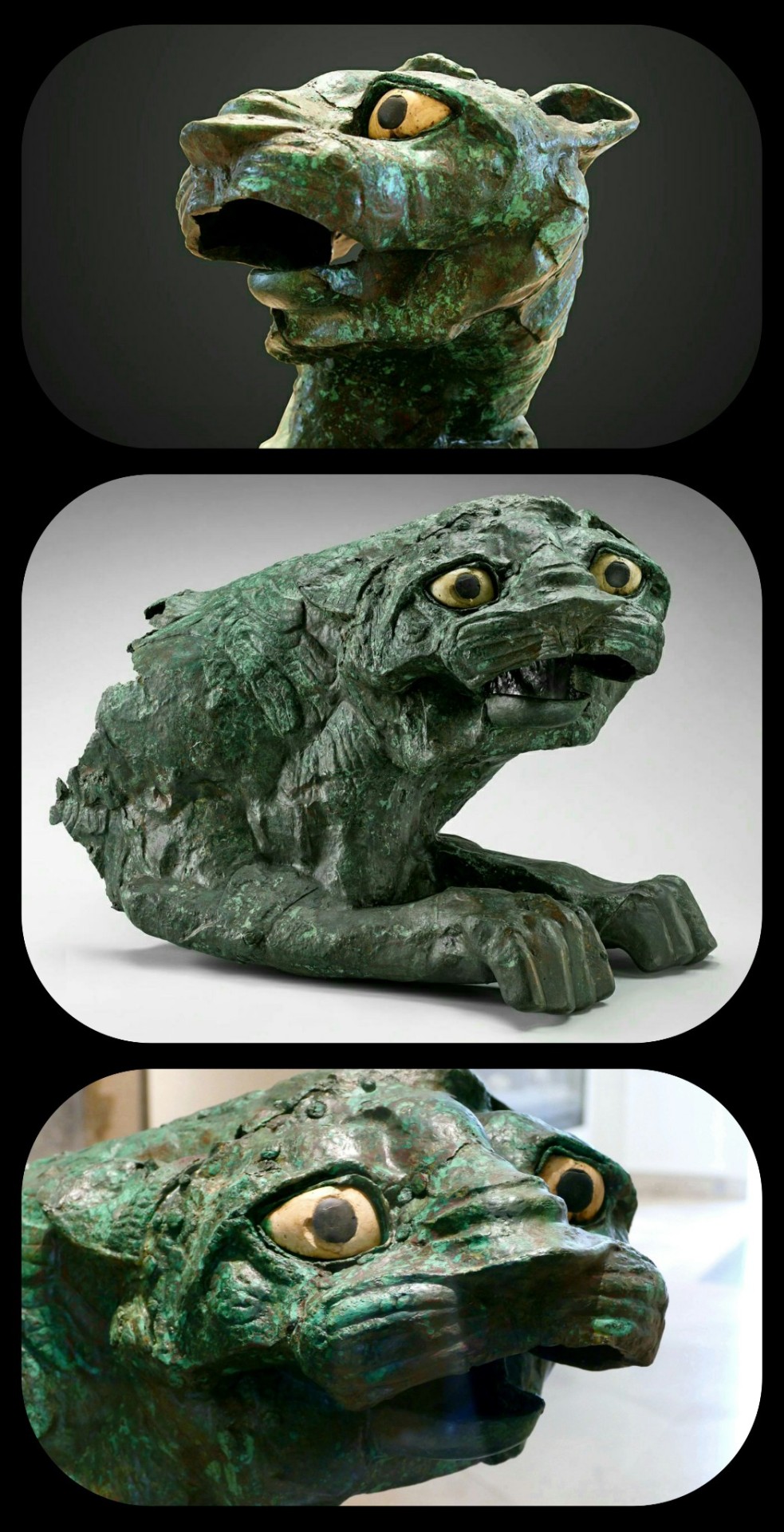
That's a pretty fitting expression, given the circumstances
Together, the two lion statues that were found at the ruined temple are known as the "Lions of Mari." They were unearthed from the ruins at Tell Hariri, where the ancient city-state of Mari once stood; this site is located near the border between modern-day Syria and Iraq.
The lions were likely designed as protomes, given their lack of hindquarters. They were originally stationed on either side of the entrance to the temple, so they are often described as the "temple guardians."

This is the same statue that appears in the first three photos, just seen from a different angle
It's believed that the temple at this site was originally built in honor of a West Semitic deity known as Dagan. Dagan was the chief deity of the Mariote pantheon; he was a particularly prominent figure in the middle and upper regions of the Euphrates, with cult centers in Mari, Terqa, Tuttul, and Ebla, but he was known throughout many parts of the ancient Near East.

The lion is primarily made of copper, with limestone and shale inlay for the eyes, and it measures 53cm tall, 77.5cm long, and 43cm wide, weighing roughly 55kg (about 21in x 30.5in x 17in, with a weight of 121lbs)
The Lions of Mari were partially crushed when their temple was destroyed (along with the rest of Mari) by Hammurabi's forces in 1759 BCE, leaving the statues badly warped...which is why they look really upset.
It's hard to find high-quality photos of the second lion, but he does have a particularly distinctive appearance:

This second lion was most recently housed at the National Museum of Aleppo, in Syria, though its current location/status (in the aftermath of the Syrian Civil War) remains unclear.
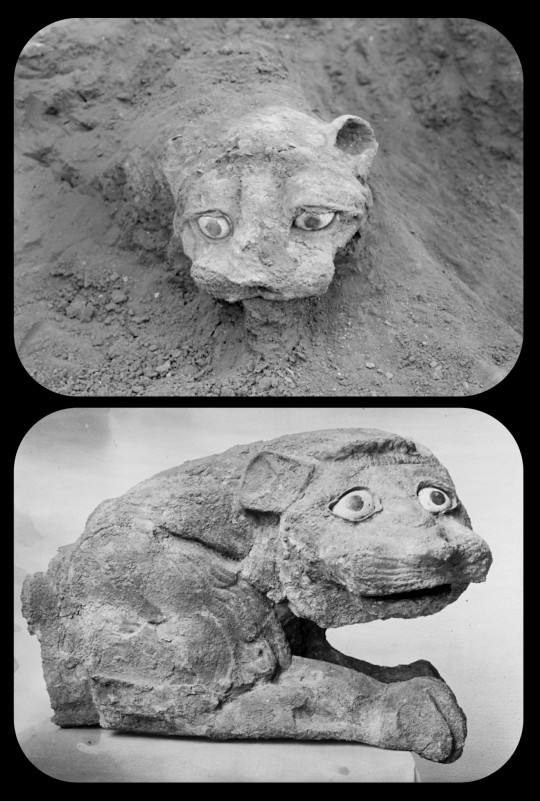
These photographs were taken during the original excavations at the ruined temple; they depict the first lion statue as it was still being unearthed (top) and the second statue shortly after it was removed (bottom)
Sources & More Info:
The Louvre: Lion of Mari
Archeologie.culture.fr: Lion Protome
Archeologie.culture.fr: Detailed Information about Ancient Mari
Virtual Museum Syria: Lion Sculpture
#archaeology#history#artifact#ancient history#art#mari#ancient temple#Syria#mesopotamia#Temple of the Lions#mesopotamian religion#ruins#hammurabi#Tell Hariri#middle east#lion#mesopotamian art#syrian archaeology#paganism#that first lion looks exactly like the way I feel
65 notes
·
View notes
Text
Ashtaroth | Ishtar Etymology
I have been wanting to do this post for a while! But have been putting it off because it's so detail intensive. >>
Astaroth, as is the most common romanization in modern works, is a goetic daemon with a fairly cut and dry pagan ancestry. The spelling Ashtaroth is closer to or more evocative of her etymology of origin- Astarte, which is another name for Ishtar or Inanna.
Ishtar, Astarte, and Inanna are all fairly ubiquitously agreed to be different names for the same goddess. Her cult was something extremely widespread across the near east in ancient times, with Ishtar being the Akkadian, Assyrian, and Babylonian name, Inanna the Sumerian name, and Astarte the Phoenetian and Cannanite name.
I say these names refer to the ‘same’ goddess the same way many modern individuals view Zeus and Jupiter as wholly interchangeable- largely because it was not just one similar divinity but the entire pantheon and family structure shared between cultures with few differences besides names. However, as with any divinity who has been distinguished out to multiple identities, each name would still hold individualized minutia and slight specific connotations. I don't want that to get erased by trying to explore the broader spectrum of how this goddess or these goddesses have been connected and transformed as they have walked across cultures.
Astarte's name is the etymological origin of the Hebrew word astarot, meaning- and I say this tentatively as I am far from an expert on hebrew- progeny or increase, which comes from Astarte’s associations with fertility. Further, she is one of a handful of pagan gods directly referenced in the Bible. She is given as an example of an enemy god that is supporting enemy nations of the Bible's protagonists, in this case the Phoenicians.
Obviously, the nature of colloquial language doesn't seem to care about her bad reputation among Abrahamic religions. Despite being decried as a demon tempting man from the path of Yhwh, her name was shifted and adopted into the language. It's easier to see how ‘Astarot’, when carried through over the hundreds of years, was shifted into ‘Astaroth’ as occultists and priests tried to understand demons in the Bible.
Ishtar is, inherently, a very gender fucky individual, though despite this fluidity is very specifically a goddess and uses she/her pronouns in historic sources. Unfortunately it wasn't simple confusion, but rather the general rampant sexism of the time this research was being done that lead to Astaroth and every other demon in the Ars Goetia being demoted as male.
Ishtar’s holy symbol was an 8 pointed star, as she was associated with the heavenly body Venus, the morning star. (A friendly reminder the planets as we know them were considered as stars in ancient times, though they often held notable importance over other heavenly bodies further from us.) Similarly, the sigil for Ashtaroth prominently features a 5 pointed star, and is the only of the Goetic sigils to do so. So, it's easy to say that more than nearly any other entity Astaroth has the most direct and clearest tie to her pagan roots.
#pagan#paganism#eclectic pagan#demonolatry#theistic satanism#astaroth#astarte#ishtar goddess#inanna#mesopotamian pagan#ashtaroth
19 notes
·
View notes
Text
ACTUAL Mesopotamian Pagan Goddesses You Can Work With INSTEAD Of Lilith 🌙

So if you've seen the old post of mine touching on an antisemitic "Demonolatry" subreddit, you'll probably have heard about the common argument antisemitic practitioners make to try and justify appropriating Lilith and a lot of other Jewish daemons.
A lot of these people will try to propose that working with Lilith isn't cultural appropriation, because she predates Judaism and is actually a "MeSoPoTaMiAn PaGaN gOdDeSs". And I don't think it takes a genius to realise that this is absolute horse shit lol. Just look at any Mesopotamian deities list and she's not there.
These people are most likely referring to similar spirits such as Lamashtu, Kilili, Ki-sikil-lil-la-ke, Ardat-Lili, and even Inanna/Ishtar in some instances. There's also the family of desert-dwelling night spirits that comprise of the Lilu and the Lilitu/Lili daemons.
While Lilith may have originated from or was based off of these daemons, they are not the same as Lilith. And I get that people have their own UPGs on certain entities being aspects of one another and such, but if that entity is part of a closed practise, you are in no place to even have a UPG on them to begin with. It comes from a practise that you aren't a part of, therefore you have no right or reason to have a UPG on it. Please just leave closed practices alone.
To my knowledge, one of the first times Lilith was documented was in the Dead Sea Scrolls, along with the daemon race of Lilin. The Dead Sea Scrolls is a Jewish/Hebrew text. So the idea that Lilith predates Judaism is just not true, and it's clearly an excuse made by people who appropriate her in an effort to brush off any accusations of their cultural appropriation and covert antisemitism. Lilith and the Lilin are only loosely based on the Lilitu wind spirits; They are not synonymous with one another. Anyone who tries to claim they are is just blatantly uneducated and/or antisemitic.
The whole idea of Lilith having origins in Mesopotamian mythology can all be traced back to a mistranslation. The BS-Free Podcast has an episode on this and it goes into depth about this mistranslation. I highly recommend checking out their podcast episode here!
⭒☆·━━━━━━━•( 🌑 )•━━━━━━━·☆⭒
In an attempt to combat some of this antisemitic fuckshit, I wanted to make an entire blog post dedicated to the goddesses and daemonesses of ancient Mesopotamia that you can work with instead of Lilith! I've had this idea for a little while now, but didn't really know who to include or how to construct this until now.
I also have another post in the making which will be a more UPG based post and will also include sigils, conjuration chants, correspondences, illustrations, etc. This current post merely exists to function as a guide and a sort of directory, with mostly historical information about each spirit listed.
So without further ado, let me show you some of the other goddesses, daemonesses, and spirits you can work with; All without appropriating someone else's ethnoreligion!
Full post is under the cut. ↓
⭒☆·━━━━━━━•( 🌑 )•━━━━━━━·☆⭒
☣️ DISCLAIMER: Some of these spirits may be considered intense, unpredictable, and chaotic in nature. These spirits can be overwhelming to work with if you are sensitive to such spiritual energies. Please tread with caution, especially if you're a beginner practitioner. Stay safe. Xx
⚠️ TRIGGER WARNING: Mentions of infant/child d3ath, ab0rti0n, and slight mentions of s3xual a55ault/abu5e and r4pe but nothing described in any explicit detail. Also slight mentions of antisemitism and Ne0-Naz1sm towards the end of the post.
⭒☆·━━━━━━━•( 🌑 )•━━━━━━━·☆⭒
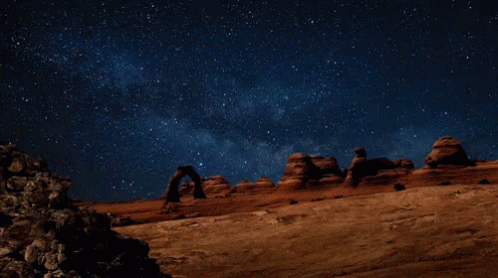
⭒☆·━━━━━━━•( 🌑 )•━━━━━━━·☆⭒
Here are some ACTUAL Mesopotamian Goddesses and Daemonesses that can ACTUALLY be considered Pagan. These spirits, in my opinion, seem to bear the most resemblance to the pop-cultural stereotype of "Lilith".
⭒☆·━━━━━━━•( 🌑 )•━━━━━━━·☆⭒
+: Kilili :+
Lady Kilili is a daemoness of Sumerian origin, likely associated with owls. She is also attested as a minor goddess who functioned as a servant of Inanna/Ishtar. - Lady Kilili's name is that of a bird, most likely an owl. In one source she is equated with ab-ba-su-su, meaning "she who leans on the window" in Sumerian. She could be referred to as "queen of the windows" and "the one of haunted places", and it's assumed that she was imagined as an owl daemoness. - Kilili was usually affiliated with Ishtar, and according to at least one source, is said to be one of her eighteen messengers. She could also be considered as having a connection to sex due to her link with Ishtar. Kilili could also possibly have links with Lady Ardat-Lili due to similar affiliations, but there is no solid evidence for this. - It has also been theorised that Queen Kilili is in fact the goddess figure depicted in the Burney Relief terracotta plaque, and while it is highly likely, this has never been officially confirmed. - With the limited information we have on Queen Kilili, all we can really say is that she was likely a daemoness and goddess of owls, nocturnal animals, the night, sexuality, and portals to other worlds (hence the whole "windows" affiliation).
. . .
+: Lamashtu :+
Lady Lamashtu, also known as Lady Labartu, is a Mesopotamian daemoness and (demi)goddess who was said to menace pregnant women during childbirth, and allegedly kidnapped children and devoured them. She was blamed for Sudden Infant Death Syndrome, as humans didn't yet have a medical explanation for this phenomenon at the time. - She was the daughter of the Mesopotamian Sky God Anu. There are also modern day accounts of Pazuzu being her consort (the Daemon King of the Southwest Winds) and their offspring being the Lilu wind daemons. In my UPG, Pazuzu and Lamashtu seem to be friends with one another (or at most, in a queer-platonic relationship) but aren't necessarily espoused to one another. I do believe there are a specific subtype of Lilu wind daemons that were created by them though. - Lamashtu was also associated with ab0rting unborns and killing newborns, eating men and drinking their blood, disturbing sleep, bringing nightmares, allegedly harassing mothers and expectant mothers, infesting lakes and rivers, killing foliage, and being a bringer of disease, sickness, and death. - Queen Lamashtu was classified as an "evil" spirit, as she acted on her own accord rather than following the gods' instructions. However, it is likely that she was just a more chaotic spirit, as not everything in our world can simply be divided up into "good" and "evil". At least, that's what I believe anyways. - In modern times, Lamashtu could more so be seen as an advocate for ab0rti0n rights and women's rights, as well as a defender of women and neglected/abu5ed children, rather than being a malicious monster who kills without any motive. - As for the men she devours, perhaps we could suggest that these men were persecuting innocent women and sƐxually a55aulting and r4ping them, impregnating them with children the women did not want or were unable to care for. Lamashtu might then assist the woman with ab0rting the unborn child, and then guiding it to the afterlife or elsewhere to be potentially reincarnated. - She could also be seen as persecuting sƐxual abu5ers and protecting the victims or potential victims of such a55aults. I don't know, just some food for thought lol. A lot of the areas in which Ancient Mesopotamian religion was practiced had quite misogynistic attitudes towards women, being the time era that it was (obligating them to stay home and be wives); So perhaps Lady Lamashtu's mythos was somewhat twisted out of content because she didn't fill that stereotypical role. In a way, this could make Lamashtu quite the feminist icon!
. . .
+: Akhkhazu :+
Lady Akhkhazu, also known as Dimme-kur, is a Akkadian daemoness associated with pestilence. She is also called "the seizer". - Akhkhazu brings fever and plagues, and is a part of a trio of daemonesses (Labasu, Lamashtu/Labartu, Akhkhazu). Despite the fact that Akhkhazu is known as a masculine name, she is said to be feminine in nature. - Next to nothing is known of Lady Akhkhazu, however we can confirm that due to her link with Queen Lamashtu, she can be associated with death, destruction, and sickness. Being a daemoness of plagues and illness, it could be proposed that Akhkhazu may also be able to help heal these things.
. . .
+: Labasu :+
Lady Labasu was a part of the aforementioned trio of Mesopotamian daemonesses alongside Lamashtu/Labartu and Akhkhazu. She is said to have the same powers and associations as the other daemonesses in that trio. - Not much is known about Labasu outside of that, but we can assume that she's a daemoness of disease, plagues, pestilence, death, and decay. I believe she could also solely be worked with as a death daemon/deity.
. . .
+: Inanna-Ishtar :+
Lady Inanna, also known as Lady Ishtar, is an ancient Mesopotamian goddess of love, beauty, justice, war, and fertility. She is also associated with sex, divine law/justice, and political power. It was initially thought that Inanna and Ishtar were originally seperate deities, but overtime merged into the same deity (similar to how Amun and Ra merged to become Amun-Ra). - Inanna-Ishtar's prominent symbols were the lion and the eight-pointed star. She also had associations with the planet Venus. She held the title of the "Queen of Heaven". - Her spouse was Dumuzid (later known as Tammuz), the god of shepherds, fertility, and vegetation.
. . .
+: Ki-sikil-lil-la-ke :+
Lady Ki-sikil-lil-la-ke (also known as Kisikil-lila or Ki-sikil) is another obscure Mesopotamian daemoness of which not much is known about. - Her origins date as far back as 600 BCE, in the Epic Of Gilgamesh, an ancient Sumerian epic poem. In Tablet XII, an Assyrian-Akkadian translation of the latter part of the Epic Of Gilgamesh, it tells the story of a 'spirit in the tree' referred to as Ki-sikil-lil-la-ke. Proposed translations for the Tablet XII 'spirit in the tree' include; Ki-sikil as "sacred place", lil-la-ke as "water spirit, and lil as either "spirit" or simply "owl" (given that the lil builds its home in the trunk of a tree). - The Ki-sikil-lil-la-ke is associated with a serpent and a Zu bird. In the ancient city of Uruk, a huluppu tree grows in Inanna's garden, and she plans to use the wood of the tree to build a new throne. After ten years of growth, Inanna returns to the garden to harvest the tree, but finds that it has since been inhabited. A serpent is dwelling at the base of the tree, a Zu bird is nesting atop the tree raising its young, and the Ki-sikil-lil-la-ke has built a home within its trunk. - Gilgamesh was said to have killed the serpent, then the Zu bird flew away to the mountains with its young, while the Ki-sikil-lil-la-ke fearfully destroyed her house and fled to the forests. - Lady Ki-sikil's story was eventually mistranslated as referring to Lilith, leading to the misinformation of Lilith having origins in Mesopotamian mythology. - Outside of this, not much is known of Lady Ki-sikil. Going off the limited information we have of her, we can conclude that her associations are with willow trees, owls (or other birds of prey), water, snakes, forests, and vegetation in general.
. . .
+: Ardat-lili :+
Lady Ardat-lili (also known as Vardat-lilitu) is a Mesopotamian daemoness and wind/storm goddess who inhabits the desert. Not much is known of this daemoness, but in modern times she has been likened to a "succubus" or vampiric-like entity. Ardat-lili was said to prey on men and conceive daemon offspring from their nocturnal emissions. - There are a few different stories of Ardat-lili's origins. Some sources claim that she was the spectre of a young girl who died before getting married, and out of sheer bitterness and envy, she sets out to prevent and/or sabotage the marriages between mortals. Other accounts suggest that Ardat-lili may refer to a specific family of multiple spirits, rather than a singular entity. In my UPG, Ardat-Lili is a daemoness, whereas the Lilitu/Lili are a class of spirits that Ardat-Lili belongs to. - Ardat-lili is yet another daemoness of which little information is known, and it's likely that a lot of her mythos was lost to history. I personally interpret her as a daemoness/goddess of storms, wind, the desert, sexuality, and the night. I also see her as being androgynous, similarly to how I see Astaroth in my UPG.
. . .
+: Ereshkigal :+
Lady Ereshkigal (also known by the titles "Queen Of The Underworld" and "Queen Of The Great Earth") is the Goddess of Kur, the land of the dead in Sumerian mythology. In later myths, she was said to rule Irkalla alongside her husband Nergal. However, Ereshkigal and Nergal were only two of the many deities that ruled over the underworld in ancient Mesopotamia. - On some accounts, her name was given as Irkalla, similar to how the Greek name Hades was given to the underworld itself as well as the ruler of the underworld. Ereshkigal is also known by the name of Ninkigal, meaning "Lady Of The Great Earth". - In the ancient Sumerian poem Inanna's Descent To The Underworld, Ereshkigal was said to be the older sister of the aforementioned Inanna-Ishtar. But historically, they weren't commonly associated with one another. Another account associates Ereshkigal with the gods Ninazu (originally regarded as her husband but later as her son) and Ningishzida. It was said that Ninazu initially ruled over the Underworld, but Ereshkigal later fulfilled this role as the mythos evolved overtime. - In later Babylonian deity lists, Ereshkigal ruled over a category of Underworldian gods that were known as "Transtigridian Snake Gods" which included Ninazu, Tishpak, Ishtaran, and the Elamite god Inshushinak. She also had a messenger named Namtar. - Some accounts suggest that Ereshkigal and Inanna-Ishtar are somewhat polar opposites to one another; With Inanna-Ishtar being the Queen Of Heaven, and Ereshkigal being the Queen Of The Underworld. -
. . .
+: Tiamat :+
Lady Tiamat (a.k.a. "The Glistening One") is the primordial goddess of the sea in Babylonian mythology. She represented the embodiment of primordial chaos, and was said to have created the entirety of the cosmos and the universe. with the help of her consort Abzu, the god of groundwater. - Tiamat's consort was Abzu, the god of groundwater. Together, they bore the first generation of deities, including their son Kingu. However, trouble arose when these gods kidnapped and murdered Abzu in an attempt to usurp his lordship over the universe. This angered Kingu, and he reported the incident back to his mother. - Devastated and enraged by her husband's death, Tiamat created eleven mighty monsters, including the first ever generation of dragons, whose bodies she filled with "poison instead of blood" and sent them to rage war upon the gods to avenge her husband. After war broke out, Tiamat was eventually killed by the storm god Marduk, and it was said that he integrated elements of her body into the heavens and the earth. - Tiamat is associated with sea serpents and dragons, and may have even taken the form of these animals sometimes. - Side Note: I actually wanna make a whole seperate post regarding the eleven monsters created by Tiamat, because I think they're really cool and I do wanna venerate them at some point!
. . .
⭒☆·━━━━━━━•( 🌑 )•━━━━━━━·☆⭒
Welp, that's pretty much it for this post! I will eventually be making a post about The Anti-Lilith-Appropriation Hierarchy Of Spirits I have come up with, comprised of all the spirits, goddesses, and daemonesses you can work with and venerate instead of Lilith. So stay tuned for that!
⭒☆·━━━━━━━•( 🌑 )•━━━━━━━·☆⭒
There are many different deities, daemons, and spirits that you can honour, worship, and venerate; Lilith doesn't need to be one of them.
Respecting closed practices is of upmost importance, because here's the thing... Spirituality and metaphysical beings cannot be definitely proven to exist. However, the years upon years of discrimination, erasure, xenophobia, religiophobia, and maltreatment in general that groups of people such as Jews and Muslims have had to go through, is very much real and can be backed up by solid evidence.
Do you really think it makes sense to prioritise something that could very well be all in your head, over actual oppressed minorities who have literally been mistreated and even killed since the very beginning of time, all because of shitty bigoted people's prejudices? Just think about that for a second.
Because if you still think it's completely fine to appropriate Lilith, even though it is evidently clear that she is closed and exclusive to Judaism (NOT Mesopotamian), then I have absolutely no problem assuming you're antisemitic and most likely a Ne0-Naz1 as well. And if you are, you should go and fuck yourself. :)
⭒☆·━━━━━━━•( 🌑 )•━━━━━━━·☆⭒

⭒☆·━━━━━━━•( 🌑 )•━━━━━━━·☆⭒
There's unfortunately quite a lot of antisemitism in occult spaces, especially when it comes to Satanism, Daemonolatry, and Luciferianism in particular. I want to do my best to counteract this shit and to help educate those new to this branch of the occult, so that unsuspecting people don't fall down an antisemitic pipeline like I did at the beginning of my path onto Daemonism and Daemonolatry.
If my best friend hadn't educated me on how bad cultural appropriation actually is and hadn't snapped me out of my radicalisation process, the gods only know where I would've ended up... It deeply concerns me just thinking about it. I hate to think about how antisemitic occult spaces such as r/DemonolatryPractices could've potentially led to me being radicalised into a Ne0-Naz1... Ugh, it makes me fucking shudder...
Please don't fall into the trap of thinking that cultural appropriation is completely fine and not harmful at all, because if you give that shit enough time to fester, you never know what it could snowball into. You'll most likely fall down a right-wing pipeline, and trust me, it is not a place you want to end up in.
I had to learn that the hard way.
⭒☆·━━━━━━━•( 🌑 )•━━━━━━━·☆⭒
Anyways, I hope you found this post helpful and informative! And as always, I wish you well on your spiritual journey. <3
~ May You Be Blessed By The Daemonic/Infernal Divine ~
-Kody
#daemonolatry info posts#pagan#paganism#demons#demonology#demonolatry#daemonolatry#daemonology#daemons#lilith#cultural appropriation#end cultural appropriation#end jewish appropriation#tw antisemitism#end lilith appropriation#stop appropriating lilith#antisemitism#antisemitsm tw#occult#paganblr#witchblr#pagan witch#baby witch#witch tips#mesopotamian daemons#mesopotamian demons#mesopotamian goddesses#mesopotamian gods#ancient mesopotamia#mesopotamian mythology
69 notes
·
View notes
Text
something that has been infinitely helpful about being devoted to aphrodites more darker epithets is the fact that ive allowed myself to experience true rage for once.
im a trans woman. ever since i was a child, I’ve withheld my emotions, but especially now that ive come into myself. when a trans woman gets angry, expect to see her being masculinized and treated as an violent, male threat.
Aphrodite has shown me just how therapeutic it is to feel those emotions, feel that rage, and to let it go. to feel that grief, that sadness, that joy, that happiness. she has helped me help myself do these things.
#aphrodite#aphrodite devotee#hellenic polytheism#hellenic polytheistic#ishtar#astarte#hellenic community#ishtar worship#mesopotamian paganism#aphrodite areia
10 notes
·
View notes
Text
Can we get some love for the Old Gods of Mesopotamia? I think they get overlooked a lot, and most people don’t even consider them in their practice. It seems like the big three are Greek, Celtic, and Norse and I get why that is, especially in the west. I think they deserve some recognition!
28 notes
·
View notes
Text

Mušḫuššu dragon from the Isthar Gate 𒈲𒍽
#Inanna#Ishtar#Sumer#Akkadian Empire#Mesopotamia#Babylonia#babylonian cosmology#babalonian polytheism#mesopotamian polytheism#sumerian cosmology#sumerian polytheism#mesopotamian cosmology#akkadian polytheism#akkadian cosmology#assyrian polytheism#assyrian cosmology#phoenician cosmology#phoenician polytheism#love goddess#fertility goddess#paganism#war goddess#babylonian polytheism#polytheism#The Queen of Heaven#Queen of Heaven#Phoenicia#Astarte
8 notes
·
View notes
Text


El, Father of the Gods, and the King of Ugarit
Ugarit, Syria
13th century BCE
Top: Image from cover of "Stories from Ancient Canaan" by Michael David Coogan, 1978
Bottom: Ancient Near Eastern Pictures Relating to the Old Testament
James Pritchard, 1969
#el#ilu#elyon#el elyon#egypt#egyptian gods#canaan#canaanite gods#phoenicia#phoenician gods#aram#aramean gods#syria#syrian gods#levantine gods#mesopotamia#mesopotamian gods#pagan gods#polytheism#archeology#magic#witchcraft#witchblr#paganblr#occult#ugarit#ugaritic#ugaritic gods#ras shamra#king
256 notes
·
View notes
Text
I have seen such conflicting opinions on working with/worshipping Lilith so I'm here to ask everyone to comment your opinion and give me a proper source to back up what you're saying.
Varied opinions include :
Mesopotamian Origin VS Jewish Origins
Lilith being Open VS Closed
Some Jewish people saying she is open VS some Jewish people saying she is closed
Demon VS Goddess
PLEASE can someone give me proper sources and evidence to prove something because it's absolutely maddening trying to figure this out 🤣
P.S. I'm asking so I DON'T appropriate, so please keep that in mind. Also, no arguing in the comments. Just add your opinion please
#lilith#jewish#pagan#paganism#satanism#lilith worship#judiasm#demon#demonolatry#goddess#goddess lilith#Mesopotamian#mother lilith
90 notes
·
View notes